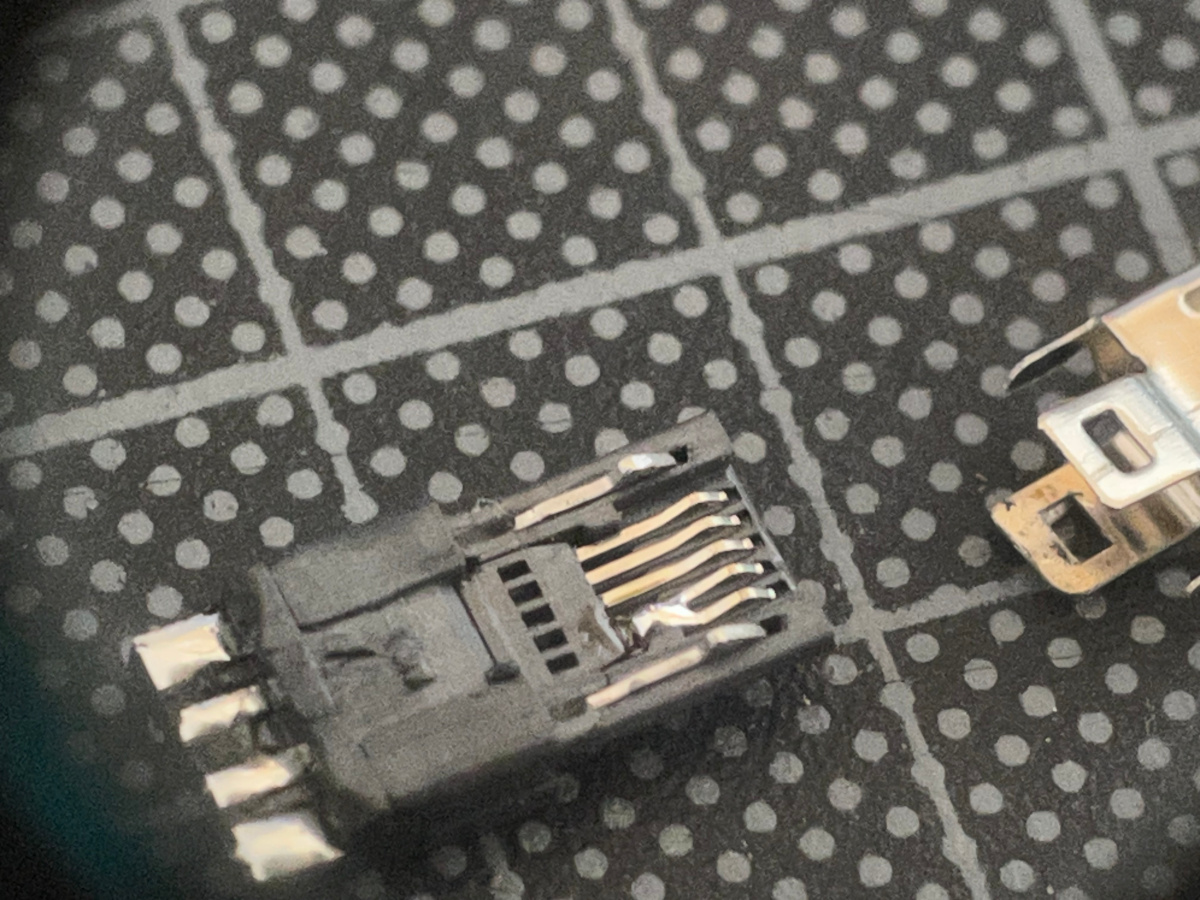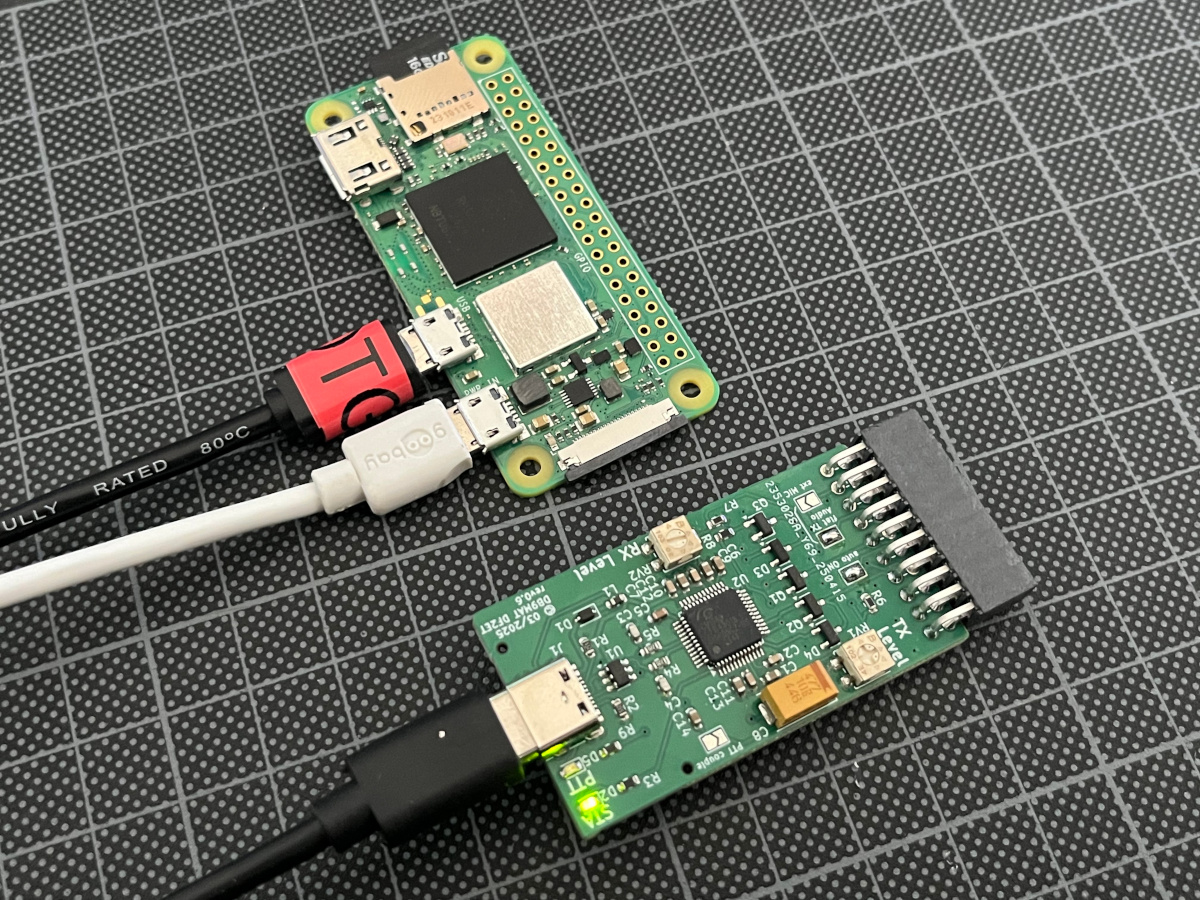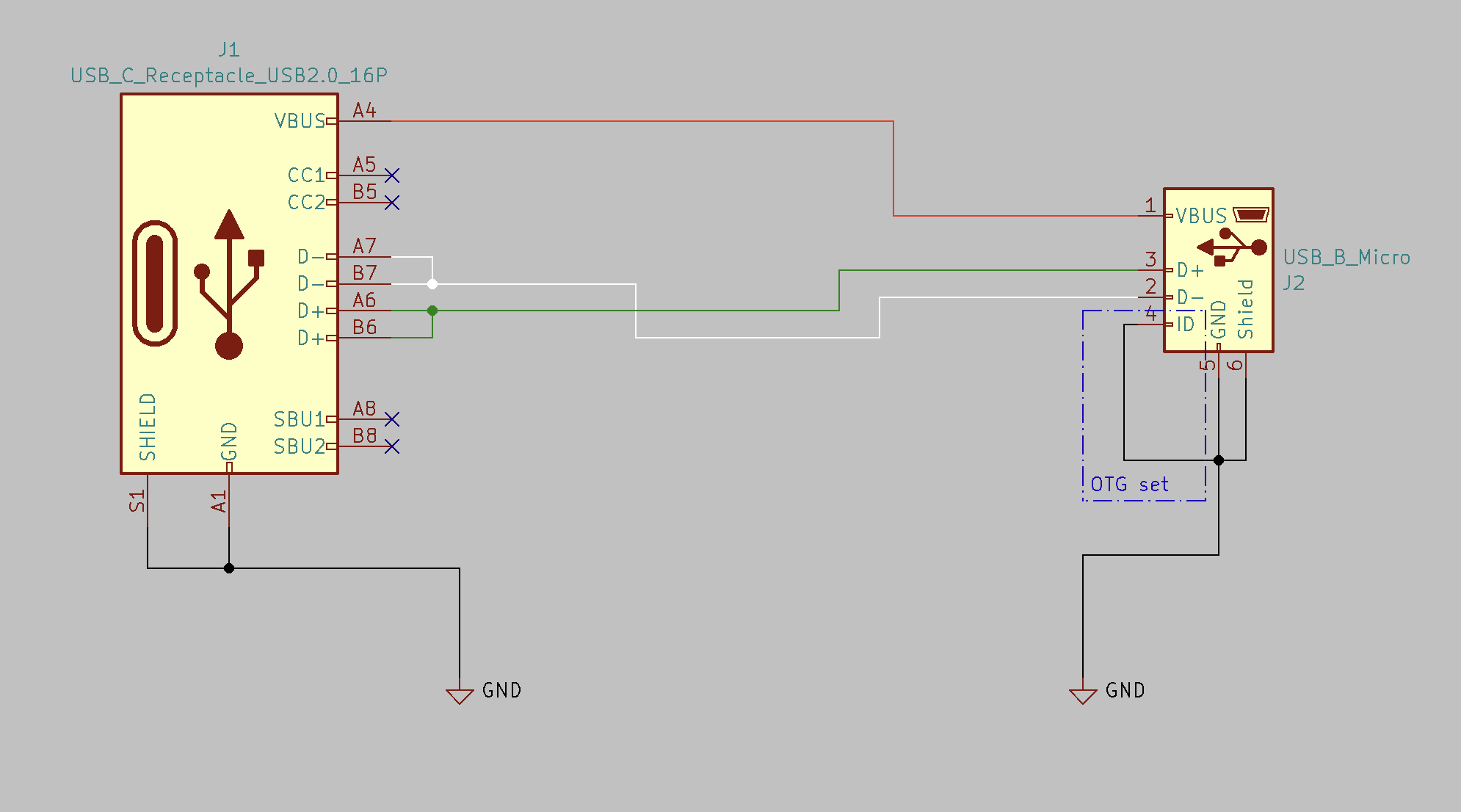After redesigning the DingleBop PCB to use a USB-C connector instead of mini USB the board was connected to a Raspberry Pi Zero 2 W. The Raspberry Pi has a micro USB port for connecting devices. To use USB-A devices you need the USB OTG adapter. Connecting a DingleBop with USB-C to USB-A cable via the USB OTG adapter worked fine. For permanent installations however I wanted to get rid of the OTG adapter and instead ordered a USB-C to micro USB cable which did not work. The device did not even get powered. So the USB OTG adapter was subject to a deeper analysis.
The result seems pretty simple: On the micro USB side the 5th pin labelled ID is connected to GND to make the port act as a normal host post. The USB-C to micro USB cable however seems to only connect the 4 standard USB pins. So the micro USB plug was disassembled and ID pin was hard wired to GND.

After re-assembling the micro USB plug and connecting the DingleBop USB-C using the modified USB-C OTG cable the device was powered and operating normally.

Looking at eBay and other offers on the internet it seems that this kind of cable is not easy to find to buy directly. So a few micro USB connectors for hand soldering were ordered. So the disassembly of the micro USB connectors becomes superfluous and the cable can be cut to needed length. For the reference this is the pinout of the cable after modification. The mod itself is marked in the blue box “OTG set”.

Please use this information at your own risk. Be aware that this may eventually break your devices. I am not liable in any way for damage to your equipment.